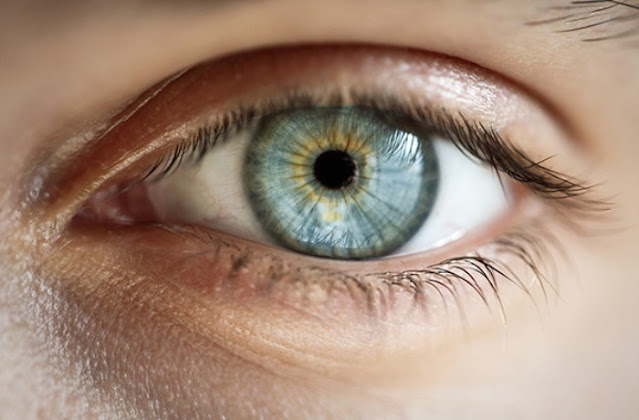Featured
- Get link
- X
- Other Apps
Protecting and Enhancing Your Eyesight: The Best Ways to Care for Your Eye Health
The gift of sight is invaluable, and taking care of your eyes is essential to maintain good vision throughout your life. In this comprehensive guide, we'll explore the best practices for eye care, addressing common eye troubles, and preventing potential issues that could affect your eyesight.
Understanding the Importance of Eye Health
Your eyes are precious and deserve the best care. Vision is
a crucial sense that allows us to experience and enjoy the biosphere around us.
To ensure your eyes remain strong and healthy, it's essential to understand the
aspects that influence eye health. This section will discuss the significance
of routine eye care, the role of genetics, and how lifestyle choices can impact
your vision.
Common Eye Troubles
Eye troubles are common, and many can be easily treated or
prevented with proper care. In this section, we will delve into prevalent eye
issues such as myopia (nearsightedness), hyperopia (farsightedness),
astigmatism, and presbyopia. We will also discuss how these conditions can be
diagnosed and managed by an eye care professional, such as an optometrist or
ophthalmologist. Common eye troubles can affect individuals of all ages and can
range from minor annoyances to more severe conditions. Understanding these
issues is essential for prompt management and care. Here are some prevalent eye troubles:
Myopia (Nearsightedness): Myopia occurs when distant objects
appear blurry. It can develop during childhood and may worsen with age.
Corrective lenses like glasses or contact lenses can address myopia.
Hyperopia (Farsightedness): Hyperopia causes nearby objects
to be blurry, while distant objects may appear clearer. Like myopia, corrective
lenses can improve vision for individuals with hyperopia.
Astigmatism: Astigmatism results from an irregularly shaped
cornea, leading to distorted vision at all distances. Special lenses can
correct astigmatism.
Presbyopia: This age-related condition affects the eye's
ability to focus on close objects. It typically occurs in folks over 40 and
requires reading glasses or progressive lenses.
Dry Eye Syndrome: Dry eyes can cause discomfort, redness,
and a gritty feeling due to insufficient tear production or poor tear quality.
Artificial tears and lifestyle adjustments can help manage this condition.
Conjunctivitis (Pink Eye): Pink eye is an inflammation of
the eye's outer membrane, causing redness, itching, and discharge. It can be
caused by infections, allergies, or irritants.
Stye (Hordeolum): A stye is a painful lump on the eyelid
caused by a blocked gland. Warm compresses can help alleviate discomfort, and
it usually resolves on its own.
Floaters and Flashes: These are specks or flashes of light
that appear in your vision and can be due to age-related changes or retinal
issues. Sudden flashes or an increase in floaters require immediate attention
from an eye specialist.
Understanding these common eye troubles allows for early
detection, proper diagnosis, and appropriate treatment, ensuring the continued
health and clarity of your vision. Regular eye exams are essential to monitor
and address any emerging issues.
Tips for Maintaining Healthy Eyes
Prevention is key when it come from to eye health. This
section will provide practical tips to maintain and enhance your eye health,
including the importance of a balanced diet rich in eye-friendly nutrients, the
significance of regular eye exams, and proper eye protection when engaging in
outdoor activities. Maintaining healthy eyes is crucial for preserving your
vision.
Here are some essential tips:
Balanced Diet: Consume foods rich in antioxidants, vitamins
(especially A, C, and E), and minerals to support eye health.
Regular Eye Exams: Schedule routine eye check-ups to monitor
your vision and detect issues early.
UV Protection: Wear sunglasses that block harmful UV rays to
safeguard your eyes from sun-related damage.
Breaks from Screens: Practice the 20-20-20 rule—take a
20-second break to look at somewhat 20 feet away every 20 minutes when using
digital devices.
Hydration: Stay well-hydrated, as dehydration can affect eye
comfort and function.
No Smoking: Avoid smoking, as it increases the risk of eye
syndromes like cataracts and macular degeneration.
Advanced Eye Care and Treatment
When common eye troubles require advanced care and
treatment, it's essential to explore the latest options available to protect
and enhance your vision. This section delves into advanced eye care.
Advanced Eye Care and Treatment Options
Laser Eye Surgery (LASIK):
LASIK is a popular procedure for correcting refractive
vision problems such as myopia, hyperopia, and astigmatism. It reshapes the
cornea using a laser to improve vision. LASIK is known for its rapid recovery
time and high success rates, making it a common choice for those seeking
autonomy from glasses or contact lenses.
Cataract Surgery:
Cataracts are a mutual age-related eye condition where the
eye's natural lens becomes cloudy. Cataract surgery involves confiscating the
cloudy lens and moving it with an artificial intraocular lens (IOL). This
procedure can restore clear vision, and advanced IOL options can even correct
presbyopia or astigmatism simultaneously.
Glaucoma Treatment:
Glaucoma is a group of eye diseases categorized by increased
intraocular gravity, which can damage the optic nerve. Various treatment
options are available, including medications, laser therapy, and surgical
procedures like trabeculectomy or tube shunt implantation. Early decision and
treatment are crucial to preserve vision.
Diabetic Retinopathy Management:
Diabetic retinopathy is a problem of diabetes that affects
the blood vessels in the retina. Treatment may include laser therapy, anti-VEGF
injections, or in severe cases, vitrectomy surgery. Strict blood sugar control
and regular eye check-ups are essential to prevent and manage this condition.
- Get link
- X
- Other Apps
Popular Posts
What Health Effects Does High Cholesterol Have?
- Get link
- X
- Other Apps
WITH OUR TIPS YOU CAN DETOXIFY YOUR BODY EASILY AND EFFECTIVELY
- Get link
- X
- Other Apps


Comments
Post a Comment